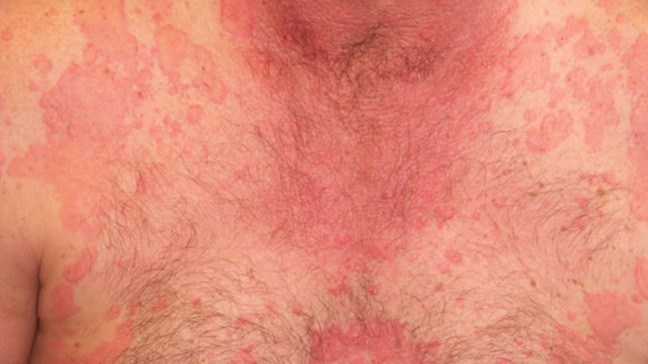Aquagenic urticaria is a rare form of urticaria, a type of hives that causes a rash to appear after you touch water. This urticaria (hives) develop rapidly after the skin comes in contact with water, regardless of its temperature.
It most commonly affects women and symptoms often start around the onset of puberty.
According to a 2011 report, there are fewer than 100 cases of aquagenic urticaria reported in medical literature.
To diagnose this condition, doctors usually need to conduct a physical examination. The doctor records reaction to water and compares them to symptoms of aquagenic urticaria.
Keep reading to learn more about aquagenic urticaria according to Healthline
Symptoms
Within minutes of being exposed to water, people with this condition can experience reddening of the skin, burning sensations, lesions
welts called wheals, inflammation
In more severe cases, drinking water can cause you to experience symptoms including a rash around the mouth , difficulty swallowing, wheezing, difficulty breathing.
The symptoms can disappear within 30 to 60 minutes of drying your body.
Cause
The exact underlying cause of aquagenic urticaria is poorly understood. However, scientists have proposed the following theories:[1][2]
A substance dissolved in water enters the skin and triggers an immune response. In this theory, the hives are not caused by water, specifically, but rather an allergen in the water.
Interaction between water and a substance found in or on the skin generates a toxic material, which leads to the development of hives.
Treatment
There’s no cure for aquagenic urticaria. However, there are treatment options available to alleviate symptoms.
Antihistamines are medications used to treat allergy-like symptoms. Your doctor may recommend you take a prescription antihistamine to calm your hives after coming into contact with water.
Creams or other topical agents that serve as a barrier between water and the skin, such as petrolatum-based products. These may be used prior to bathing or other exposure to water to prevent water penetration into the skin.
Ultraviolet light therapy (also called phototherapy), such as Psoralens ultraviolet radiation A (PUVA) and ultraviolet radiation B, have been reported to resolve symptoms of AU in a few cases.
If you have a severe case of aquagenic urticaria and can’t breathe, you may need to use an EpiPen. EpiPens contain epinephrine, also known as adrenaline. They’re only used as an emergency alternative for severe allergic reactions.
The medical information provided in this article is provided as an information resource only. This information does not create any patient-physician relationship and should not be used as a substitute for professional diagnosis and treatment.
Source: Guardian Newspaper




